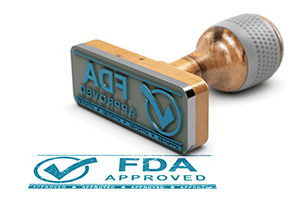OVERVIEW OF AN FDA INSPECTION
Do not panic. As long as you are calm, organized, and informed, you and your team can make it through your inspection. For this post, we’ll give a general overview of the inspection process so you’ll know what to expect. Let’s get right to it.
KINDS OF INSPECTIONS
There are four basic kinds of inspections: pre-approval, post-approval, surveillance (routine), and for-cause.
In most cases, you will receive a 482 Notice of Inspection prior to inspection.
To get a better idea of the inspection from the investigator’s viewpoint, consider the information he or she goes over before his or her visit. The investigator creates an inspection plan based on your organization’s previous inspection reports, responses to form 483 observations or warning letters, your organization’s website, events since the last inspection such as complaints, recalls, ADEs and FARs. The inspector will go in having a general game plan regarding inspection priorities.
BEGINNING OF INSPECTION
At the beginning of the investigation the inspector will show his or her credentials (this is required by law) to the top management official such as an owner or agent in charge. These credentials may not be photocopied, but the name and number may be written down.
These credentials give the inspector the right to examine employees, conduct inspections, to collect samples, and to verify and copy records.
The lead investigator will then provide a general agenda.
The investigator(s) will tour the facility with a knowledgeable person such as a manager accompanying him or her.
DURING INSPECTION
Technically, there are things outside of the FDA’s scope such as pricing information, employee information, etc. However, inspectors are known to be human, and some inspectors might not respond very well to objections, so it’s prudent to weigh the risks vs. benefits when reminding any federal employee of his or her scope.
During the inspection, the inspector is limited to “reasonable” requests. This is a broad term. However, if the inspector requests anything that is unreasonable or difficult to produce, the issue can be brought up in a discussion. Chances are, that the inspector will be reasonable if he or she is made aware of any extenuating circumstances.
At the end of the day there will be wrap up meetings. At this time it’s a good idea to verify that the inspector has received all requested documents, to bring up any concerns that need to be addressed right away, and to ask if there are any items he or she may want to review or discuss the following day.
Keep in mind that different inspectors during the same inspection may request the same documents, so it may be a good idea to make copies and then replace the document right away so that it will be in its proper place should the next inspector request it.
If the inspector brings up any issues, it’s a good idea to fix them right away if at all possible. Do not wait until the inspector finishes his or her investigation. The FDA wants to see that immediate actions are taken, and will be judging attitude and responsiveness.
In addition to making sure its regulations are being followed, the FDA also wants to see:
- that management has necessary control over the organization
- well-trained employees
- well-maintained facilities and equipment
- good process control
- a history of conducting investigations, resolving failures, handling complaints, etc.
- that management is already aware of any problems
- that you have written SOPs and staff have been trained to follow them
INSPECTION WRAP-UP
When the inspection is complete, an Establishment Inspection Report will be written and a copy provided to the organization. From this report a final report is written: the FMD 86 Establishment Inspection Report Conclusions and Decisions. It will list any actions the organization needs to take or any sanctions it faces.
If a re-inspection needs to happen to follow up on any violations, there may be fees associated with it.
Blog Categories
Stay Informed
Have Questions?
You will be able to find answers to most frequently asked questions here
Since 2001 CfPIE has
Check Out Our Life Science Training Courses.
Need help finding the right life sciences training courses? We can help you make the right choice based on your company's needs.
- AMDE, PK/TK & Drug Metabolism in Drug Discovery and Development
- Advanced Topics in Biostatistics for Non-Statisticians
- Analytical Chemistry Principles for Pharmaceutical Scientists
- Analytical Method Validation for Biologics, Biopharmaceuticals and Other Therapeutic Products
- Aseptic Processing in the Manufacture of Biotech and Pharmaceutical Products
- Auditing and Qualifying Suppliers and Vendors
- Best Practices for an Effective Cleaning Validation Program
- Biostatistics for Non-Statisticians
- CMC Regulatory Compliance Strategy for Cell & Gene Therapy Medicines
- CMC Regulatory Compliance Strategy for Recombinant Proteins, Monoclonal Antibodies, & Biosimilars
- Cell and Gene Therapy Product Lifecycle - Introduction Course - Gene Editing, CRISPR/Cas, TALEN Technologies
- Change Control - GMP Requirements and FDA Enforcement
- Cleanroom Fundamentals - Regulation, Science, Design, Practice, Operation & Management
- Clinical Document Management: A Trial-by-Trial Compliance Approach
- Clinical Trial Project Management, Phase 1-4 Best Practices
- Comprehensive Overview of FDA Regulatory Compliance for Drug and Biotech Products
- Computer System Validation
- CRO, CDMO and Non-Clinical Vendor Management Fundamentals
- Development and Validation of Bioanalytical Assays for Biologics: Quantification (PK) and Immunogenicity Assays
- Effective Document Management for Pharma, Biotech & Medical Device
- Effective Internal and External Quality Assurance Auditing for FDA Regulated Industries
- Ethics in Research - Values for Responsible Conduct of Research
- European Regulatory Procedures - EMA & National Requirements
- FDA Inspections - What Regulators Expect and How to Prepare
- GCP Audits - Best Practices for Ensuring Compliance & Detecting Fraud and Misconduct in Clinical Trials
- GMP Training for the QC Laboratory
- Good Clinical Practices (GCP) & Risk Based Monitoring - Understanding and Implementing Current Global Requirements
- Good Laboratory Practice (GLP) for Nonclinical Laboratory Studies
- Good Manufacturing Practices Training | GMP Course
- Human Error Prevention (HEP) - Risk Factors and Strategies
- Implementing and FDA Compliant Stability Program
- Integration of Risk Management Principles and Activities into the Pharmaceutical Quality System
- Intro to Medical Device Submission - 510(s)s, PMAs & Exemptions
- Introduction to Medical Combination Products
- Introduction to Statistical Analysis of Laboratory Data
- Introduction to Vaccines - CMC Regulatory and Quality Aspects
- Laboratory Equipment Validation and Qualification
- Lyophilization Technology - Application of Scientific Principles
- Marketing & Advertising of Pharmaceutical & Medical Devices
- Medical Device Process Validation Training for Professionals
- Medical Devices: Developing Effective Post Market Surveillance and Compliant Handling Systems
- Molecular Biology Techniques - Applications in the Biotechnology and Pharmaceutical Industries
- OTC Drug and Personal Care Product GMP & FDA Regulation
- Oncology Drug Development Course - A Comprehensive Overview
- Overview of FDA Regulatory Compliance for Medical Devices
- Overview of the New EU Medical Devices Regulations: MDR, IVDR, CE Mark and Compliance, QMS Fundamentals
- Pharmaceutical Root Cause Analysis of Failures & Deviations - Developing an Effective CAPA Strategy
- Preparation of FDA Submissions and Communicating with the FDA
- Preparing the CMC Section for NDAs/INDs/CTDs
- Process Validation for Drugs and Biologics
- QbD - Product & Process Optimization using Design of Experiments
- Quality Assurance/Quality Control for Biologics and Biopharmaceuticals
- RNA Biotechnology - An Introductory Course
- Specifications for APIs & Pharmaceutical Drug Products
- Technical Writing for Pharma, Biotech and Med Devices
- The Drug Development Process from Concept to Market
- US Medical Device & Quality Systems Regulations - Design Controls & Validation
- Writing Effective SOP and Other Process Documents
ABOUT US
The Center for Professional Innovation and Education (CfPIE) provides technical training for Pharmaceutical, Biotech, Medical Device and Skin/Cosmetics professionals. CfPIE offers more than 350 class sessions annually across 80 course titles in multiple formats, such as classroom, on-site, and certification programs.
USEFUL LINKS
STAY INFORMED
Your privacy and trust are important to us. We collect your information only for operational and advisory purposes. We do not and will not sell your private information to a 3rd party. By agreeing to this policy, you are giving us permission to contact you about our services and courses.
All Rights Reserved | CfPIE Inc. | Our courses and materials are copyrighted by CfPIE, Inc. and may not be used or reproduced without the written permission of CfPIE, Inc. management. | In partnership with CCC



